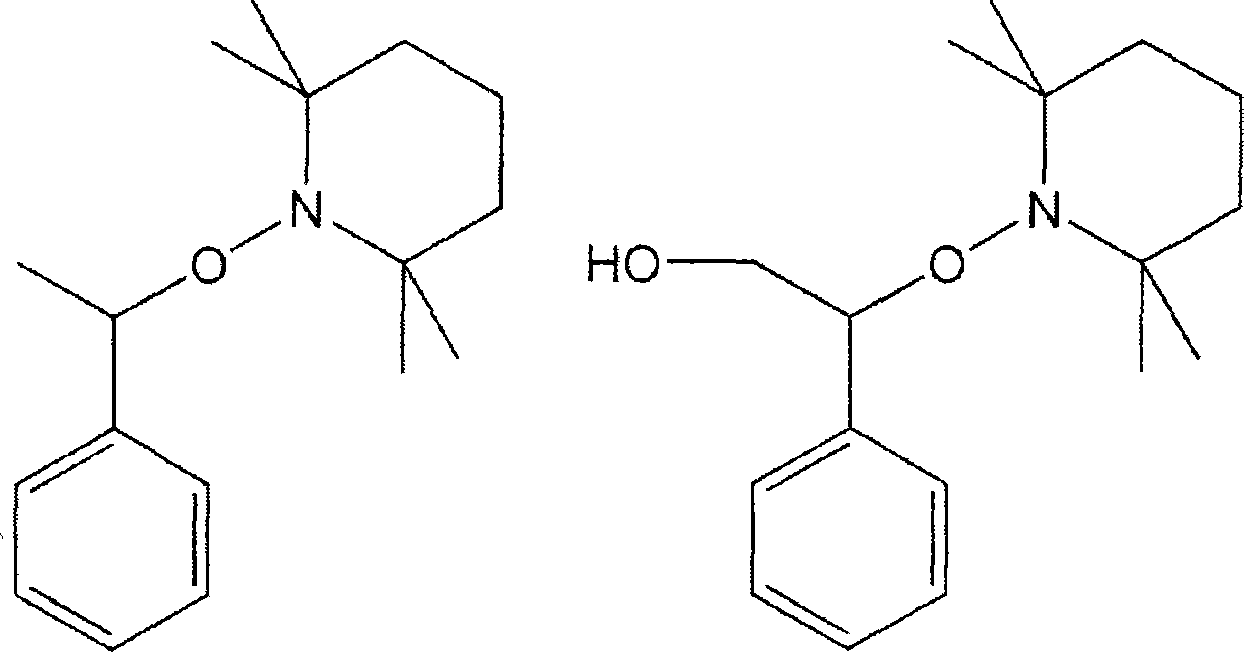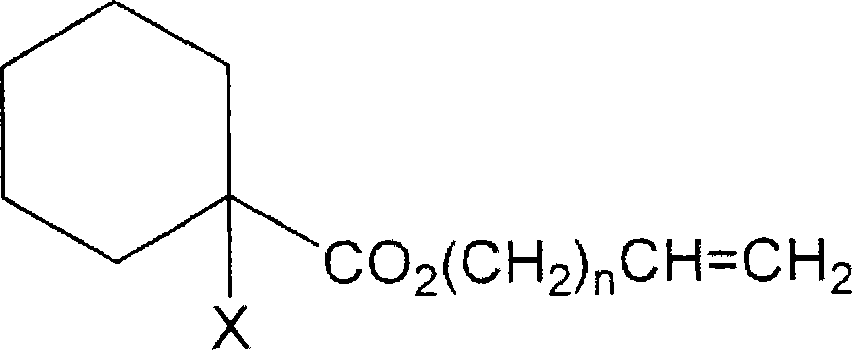Modified thermoplastic resin
A thermoplastic resin and resin technology, applied in the field of modified thermoplastic resin, can solve the problems of difficulty in manufacturing, unknown use of resin modification, etc.
- Summary
- Abstract
- Description
- Claims
- Application Information
AI Technical Summary
Problems solved by technology
Method used
Image
Examples
Embodiment
[0402] Hereinafter, specific examples and comparative examples of the present invention will be described, but the present invention is not limited to the following examples.
[0403] In addition, in the following examples, "number average molecular weight" and "molecular weight distribution (ratio of weight average molecular weight to number average molecular weight)" were calculated by the standard polystyrene conversion method using gel permeation chromatography (GPC). Here, a polystyrene crosslinked gel filled material (shodex GPC K-804; manufactured by Showa Denko Co., Ltd.) was used as a GPC column, and chloroform was used as a GPC solvent.
[0404] In the following examples, the "average number of terminal acryloyl groups" is "the number of acryloyl groups introduced per molecule of polymer", which is determined by 1 H-NMR analysis and the number average molecular weight obtained by GPC were calculated.
[0405] In addition, "parts" in the following examples represent ...
manufacture example 1
[0406] (Production Example 1) Polymerization and purification of acryloyl double-terminal poly(n-butyl acrylate)
[0407] It was carried out according to the method described in Production Example 2 and Example 2 of Japanese Patent Laid-Open No. 2004-203932. That is, under a nitrogen atmosphere, CuBr (4.2 parts), acrylonitrile (44.0 parts), n-butyl acrylate (100 parts), 2,5-dibromoadipic acid diethyl ester (8.8 parts), and stirred at 80°C. Pentamethyldiethylenetriamine (hereinafter, simply referred to as "triamine") (0.17 part) was added thereto, and polymerization was started. During the polymerization, n-butyl acrylate (400 parts) was continuously added dropwise, and triamine was further appropriately added, while heating and stirring to keep the temperature of the reaction solution at 80° C. to 90° C., thereby obtaining a bromine-based double-terminated polymer.
[0408] The resulting bromo-terminal polymer (100 parts) was dissolved in N,N-dimethylacetamide (100 parts), a...
Embodiment 1
[0410] Into a 6 L autoclave with a rotary stirrer, 2250 g of distilled water, 3.5 g of calcium orthophosphate, and 0.14 g of sodium α-olefin sulfonate were charged. Next, 6 g of benzoyl peroxide and 3.5 g of 1,1 - Di(tert-butylperoxy)cyclohexane, 4.5 g of 2,4-diphenyl-4-methyl-1-pentene, 22.5 g of coconut oil and charged in an autoclave. Next, the autoclave was heated up to a temperature of 85° C., and polymerized at the same temperature for 4 hours to obtain a bead-shaped polymer (2).
PUM
 Login to View More
Login to View More Abstract
Description
Claims
Application Information
 Login to View More
Login to View More - R&D
- Intellectual Property
- Life Sciences
- Materials
- Tech Scout
- Unparalleled Data Quality
- Higher Quality Content
- 60% Fewer Hallucinations
Browse by: Latest US Patents, China's latest patents, Technical Efficacy Thesaurus, Application Domain, Technology Topic, Popular Technical Reports.
© 2025 PatSnap. All rights reserved.Legal|Privacy policy|Modern Slavery Act Transparency Statement|Sitemap|About US| Contact US: help@patsnap.com



